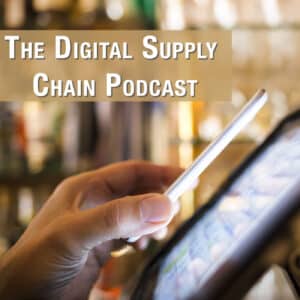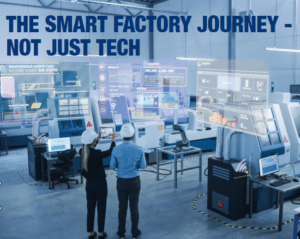In House Warrior: U.S. Manufacturing Renaissance with James CreaN
James Crean, president of Crean Inc., speaks with Richard Levick, chairman of Levick, in this transcribed installment of the In House Warrior podcast series.
Speaker 1: Welcome to the Corporate Counsel Business Journal’s daily podcast, In House Warrior, with host Richard Levick, Chairman of LEVICK, a global crisis and litigation communications firm.
Richard Levick: Good day and welcome to In House Warrior, the daily podcast of the Corporate Counsel Business Journal. I’m Richard Levick. With me today is James Crean, who is the president of Crean Incorporated, which consults to companies with hands-on engineering and smart factory technology to provide and help companies make the digital transformation. James, welcome to the show.
James Crean: Thanks for having me Richard. I’m looking forward to it.
Levick: It’s great to see you. Also, with me is Ian Lipner, a senior executive with LEVICK. Ian, always great to see you.
Ian Lipner: Thanks for having me, I love talking with you.
Levick: We’ll be doing the reviews tomorrow morning, so thank you so much for those kind words. James, if you would, give us a little background about Crean and the work that you do in the manufacturing sector.
Crean: Crean came out of the aerospace industry. We have over 500 engineers on our team that provide hands-on engineering and smart factory transformation services to forward-looking companies who understand that smart factory technology and those methods are essential to the future survival within this competitive market.
Levick: What are some examples of the kind of before and after photos, if you will, of the work that you do and the success that you have?
Crean: We work with a lot of companies that do discrete manufacturing. In other words, it’s not a bottling company that’s doing the same things continuously, but rather might be producing a variety of different parts and different items that they deliver to their customer. We’ve worked with companies where they’re delivering advanced electronics and we go through and we first start by understanding their business in detail, which is an essential element and then work with them to identify where there are opportunities for improvement and create efficiencies.
The way we do that is, we use a variety of different tools and methods that are somewhat standard in the industry and others are smart factory technologies that bring data to the decision makers in new ways that allow them to be able to see what’s going on in their operation. Then are advancing artificial intelligence capabilities with that data to be able to now analyze and provide insights that are often very difficult to derive from the data, otherwise.
Levick: James, we had a conversation about a year ago and you said something then that really struck me. You said, “There’s a mythology, if you will, that American manufacturing can no longer be profitable in the global environment, but that if you continue to evolve, in fact, the Delta is actually much different. That using artificial intelligence innovating constantly that American manufacturing, in fact, can be far more competitive on a global basis.”
Crean: Absolutely Richard you’re absolutely right. Too many companies assume that in order to produce products cost-effectively, they have to go overseas. The reality is that, yes, China labor rates are normally five to six times cheaper in most cases to U.S. labor rates, but U.S. workers are also eight times more efficient than overseas workers and you use that to your advantage. The other obvious thing is that, you’ve got a much smaller and shorter supply chain. So, when you use those to your advantage, you’re able to produce product faster, you’re able to produce product at a lower cost. When you couple that with the advancing smart factory technology that is continuing to advance every single day, we’re continuously bringing on new capabilities into the offerings that we bring to our clients, that is game changing.
It’s really hard to underemphasize how important that is for the future of American manufacturing, Richard. I mean, the benefits that, that can bring are so significant and so quick, when you’re looking at the right information as your products are being processed through the factory,
Levick: James, and I know Ian has got a question for you, but one last one before I turn it over to him. Do you think the general councils and other senior executives even get to the conversation to do the math, to see a manufacturer in the United States as an option? Or for many companies has that horse already left the barn?
Crean: It depends, to be honest with you. We definitely have had conversations with people that help companies sell on Amazon for instance. So they enable companies to sell on Amazon. Their experiences are, those companies typically just assume that they have to do their manufacturing in China in order for that to be cost-effective and for them to be able to compete. What we’ve found is, companies that spend the time to really work through that do have to develop an efficient production operation in order to compete effectively. But there’s no question about it, the benefits of that are enormous.
The future is continuing to evolve every day. What we see is that the future of products, product delivery to customers is customized products. So, if you want to deliver a customized product on Amazon time, you can’t produce it and then spend a week, even by air, getting it to be delivered from China, through customs and through all of the different steps that it has to go through. So if you want to deliver a customized product on Amazon time, it has to be produced locally. So you might as well start today in thinking about, how do I produce maybe a product that’s not customized currently, but be prepared for the future. Be able to customize that product, produce it today, do it efficiently and effectively, implement smart factory technologies that allow you to do that and compete globally like nobody else can, you just made a current product and then you’re positioned to be really agile for the future, as your customer starts demanding more and more customization.
Lipner: Well, we won’t let any leave out early. I work a lot in technology, we see a trade off between cost and capability. But it seems to me that we have an interesting thing here, where perhaps as you said, in the market, like in China, where they’re not as sensitive to the cost of one extra labor, they’re not necessarily incentivized to innovate along the lines of the efficiencies that American businesses are. So does America kind of have a lead right now, or at least the opportunity for one, when it comes to using AI for manufacturing?
Crean: Absolutely. We have the opportunity. Do we have the lead? I think that’s probably up to debate. I would say that Germany is one of the world leaders in smart factory technology, and China is not ignoring that. They definitely are focused on implementation of AI and those kinds of technologies, not necessarily as much in manufacturing. In the U.S., where you are implementing AI in a variety of different ways. Again, not as much in manufacturing as in other areas, we’ve been just focusing on manufacturing and engineering. So that digital thread that runs from the people doing product development and engineering all the way into production, and then through to the customer and the supplier.
A simple way of thinking about this is, if you think about a Domino’s, you go online, you order Domino’s, you use the Domino’s pizza tracker and it shows you, you’ve placed your order and it shows you each of the process steps as you go through the process of making the pizza, putting it in the oven, cooking the pizza, boxing it, getting it to the delivery person, and then getting it to your home. You as a customer, have visibility into that full process. Well, think about the possibilities when you’re tracking your production, tracking the data, the assets that are going through the working process, as it’s going through your production, to be able to provide that kind of visibility to your customer, Domino’s is out in front in that.
Now think about that when you have a much more complex product and being able to provide that kind of visibility to your customer, that’s the future. That asset tracking, that we often talk about in our company and the technology that we we bring to our clients, is a critical element. Because as you track it, Domino’s is collecting data, they can see how long does it take to make every one of their pizzas, how long does it take to cook it, how long does it take to deliver it. They’re collecting data and they’re continuously improving their operation, while at the same time, delivering visibility to their customer. It’s phenomenal.
Lipner: You know you’re making me a little hungry. You mentioned pizza delivery, I’m thinking of, “Wow, that’s an industry that had to pivot very quickly.” It seems to me that efficiency isn’t the only benefit here from the smart technology, it’s not just price, it’s also the ability to kind of change things up pretty quick.
Crean: Well, no, that’s true. That smart factory capability is, to us, it’s really highlighted in this COVID environment, because those companies that have been able to pivot quickly and produce new products and some from scratch. Some saying, “Oh, I have to go find sources of supply and then I have to design the product and then I have to produce the product and then I have to deliver it.” We’ve worked with so many different companies and small companies that said, “Oh, hey, we do 3D printing. We can start printing visors for the frontline workers in healthcare and in other industries.” They started 3D printing, because they had that 3D printing technology and they had the engineering capability and whatever else that was necessary. They were able to quickly pivot and start delivering product that they never perused before.
That kind of flexibility to pivot, is phenomenal. We’ve done it in our own company. I mean, one of the key technologies that we implement is, tracking assets, tracking work in process through the operation, just like a pizza going through the build process and delivery process. We track manufactured items, whether it’s for airplanes or cars, or what have you, and collect that data. From that data, we help to optimize that operation using digital analytics. Well, similarly, we’ve taken that technology and said, we can use that advanced tracking technology in COVID tracking within companies and we can be able to tell a company if somebody has come down with COVID, who has been within six feet of that person and how long they’ve been within six feet of that person, for instance, in order to be able to help them to keep their folks safe.
So pivoting is essential and that digitally enabled enterprise helps to deliver on that pivot quickly.
Lipner: It occurs to me that, we’re going to keep having to pivot with the way everything is going and we don’t know what will happen in the next election and so on and so forth. What kinds of opportunities do you see ahead for manufacturers? How does our ability to achieve higher levels of automation, position those who are embracing the American smart factory to compete?
Crean: The political environment on both sides of the aisle is very ripe for a renaissance in United States manufacturing, there’s no doubt. I was listening to all of the candidates, that the COVID-19 crisis has made it very clear to anybody that’s paying any kind attention, even the politicians, if you will, that the COVID-19 crisis has created an opportunity to see the dependence on foreign manufacturing can be a really critical national security issue. We would have otherwise considered a relatively low cost by a high production rate item, like the different items for personal protection equipment, and gowns and masks and booties and everything else that the medical folks need. If we have to have local manufacturing, we have to have U.S. manufacturing, and that’s become very clear, obviously, from this COVID-19 crisis.
Levick: James, I think if anything what COVID-19 has taught us, is that all of your early applause rounds for just-in-time manufacturing is getting a big rethink these days.
Crean: Yeah. It’s interesting. Like I had said, we utilize industry standard methodologies, as well as smart factory methodologies. One of those standard methods is lean, which part of that is just-in-time manufacturing. But we’ve never actually been big believers in just-in-time. What you actually want to focus on, is how fast can you deliver something? How fast can you manufacture it? Because delivering faster allows you to be able to meet that demand. Designing a system that’s able to scale up and down as necessary with customer demand, that allows you to be responsive and agile. Designing a system that allows you to produce many different products rather than a single product, allows you to be more agile and be able to do it quickly.
Our focus is on speed, because if you can deliver fast with those same resources, you’re delivering cheaper. In order to deliver fast, you have to have quality built in all the way through that process, because you cannot deliver fast and rework stuff as it gets made. So our focus is speed. Speed is more important than a lot of these sort of commitments to just-in-time and some of those things that have been critical too, in the ’80s and ’90s. But, just-in-time, has its time and place, but not in everything that you do.
Levick: James, in a minute or so, we have left, what’s the key take away you want to leave for general councils and other executives listening to the show?
Crean: It’s essential that companies recognize that COVID-19 has clearly shown some new and different types of risks that need to be managed within the enterprise, within the supply chain, in the way that companies need to be agile, to be able to respond quickly to the types of reactions that can happen within the marketplace. It’s taught us a lot of lessons. I think the valuable thing that we can take away from this, despite all of the pain and suffering that we all had to witness is that, our organizations need to focus on being agile and using smart factory technologies. Those types of things can really help us to be the agile companies and the agile economy that we need to be, in order to be strong going forward.
It’s shown there’s a great opportunity for manufacturing in the United States and we’re very, very excited to help companies to do that. We’re doing that every day and it’s really heartwarming to have that opportunity to work with entrepreneurs and larger companies to bring manufacturing jobs home, to the United States.
Levick: James, what a great point to end on. Thank you so much James Crean, of Crean Incorporated. Ian Lipner, thank you so much for joining me today. This is Richard Levick with In House Warrior, the daily podcast, the Corporate Counsel Business Journal. Thank you for joining and we’ll see you tomorrow.
Speaker 1: You’ve been listening to the Corporate Counsel Business Journal’s daily podcast, In House Warrior, with host Richard Levick.



